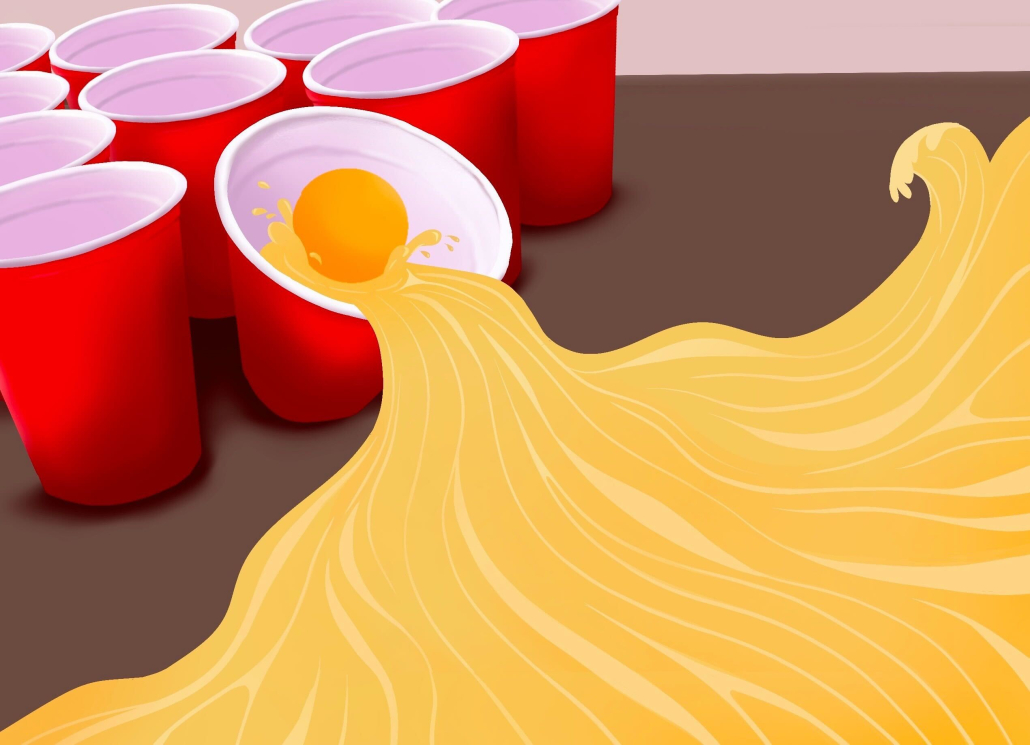The hidden epidemic of binge drinking

When it comes to alcohol, the law stands as a barrier that often fails to prevent its avid and passionate demographic from consuming it — think 1920s Prohibition.
The same could be said about college students.
Whether it be pregaming before a tailgate or drinking jungle juice from red Solo cups at fraternity parties, drinking culture permeates most college campuses to the point of becoming a defining characteristic of the so-called “college experience.” Whether to get tipsy to experience something new or to get drunk for fun, college students drink for a variety of reasons, and more often than not, their consumption reaches alarming amounts.
Despite regulations on campus that attempt to keep USC a drug-free environment for the safety and wellness of students and faculty, alcohol frequently makes its way into the hands of college students, especially underage students like freshmen who feel the additional pressure that comes with assimilating to a new environment.
Though participating in drinking culture while underage is a separate issue of its own, an arguably greater issue pertains to the heavy amounts of alcohol that college students consume.
In terms of consumption, the National Institute on Alcohol Abuse and Alcoholism cited a study stating that “almost 53 percent of full-time college students ages 18 to 22 drank alcohol in the past month and about 33 percent engaged in binge drinking during that same time frame.”
The issue with drinking in college is its perception as a rite of passage. It is a ritualistic endeavor that marks the beginnings of adulthood away from home, serving as an act of rebellion contrasting the more regulated days of high school.
While doing anything in moderation can be safe and fun, alcohol is rarely moderate in college.
What is even worse is the normalization of binge drinking that occurs on college campuses. This normalization allows the flourishing of what can be considered a huge public health crisis, allowing many habits of severe health issues to blend in with normalcy.
In other words, the current culture of drinking in college allows for covert alcoholism to run rampant in broad daylight.
The University continues to aggravate this already-existing issue with its tendency to turn a blind eye to the crisis of alcohol overconsumption. Though USC labels itself as a dry campus, the school acknowledges the presence of alcohol, mainly at on-campus tailgates during football games.
Though the general public is relatively well-informed on the individual health concerns arising from alcohol consumption, there are a variety of other risks associated with heavy drinking. Statistics chronicle the damages done at the community level when students binge alcohol, such as property damage, sexual assault and death at its extremes.
The consequences of binge drinking even creep into academic settings. According to the National Institute on Alcohol Abuse and Alcoholism, one in four college students have academic problems associated with drinking too often.
Even if students can identify — if at all — their personal binge drinking habits, the University should improve in their capabilities of assisting students in recovery.
In order to counteract the prevalence of binge drinking on college campuses, the root issues fueling collegiate drinking culture must be addressed.
The reasons for binge drinking among college students are varied, but can be narrowed down to common motivations such as increased social pressure from peers and academic-related stress.
One thing USC can and should do is aim to improve greater therapy services to its students to help with mental health issues that may arise from academics or peer pressure. Currently, USC offers extremely minimal services for mental health, such as therapy services at the Engemann and Eric Cohen Student Health Centers. However, students can only book consultation appointments to meet with a counselor four to eight times, diminishing the effectiveness of the University’s therapy treatments, as long-term therapy typically helps get to the root of the issue much more effectively than short-term sessions.
As college students enter this new chapter in their lives — usually independent and away from their homes — they get their first taste of freedom and autonomy. Avoiding alcohol altogether becomes difficult with desires to assimilate into the college lifestyle.
Rather than banning alcohol altogether and brushing the issue under the rug, USC should acknowledge its deep history and presence on campus and address the primary causes that fuel the invisible epidemic.
After all, with what history has demonstrated, ignorance and banishment will only allow the issue to fester, silently growing in the shadows of the University.

